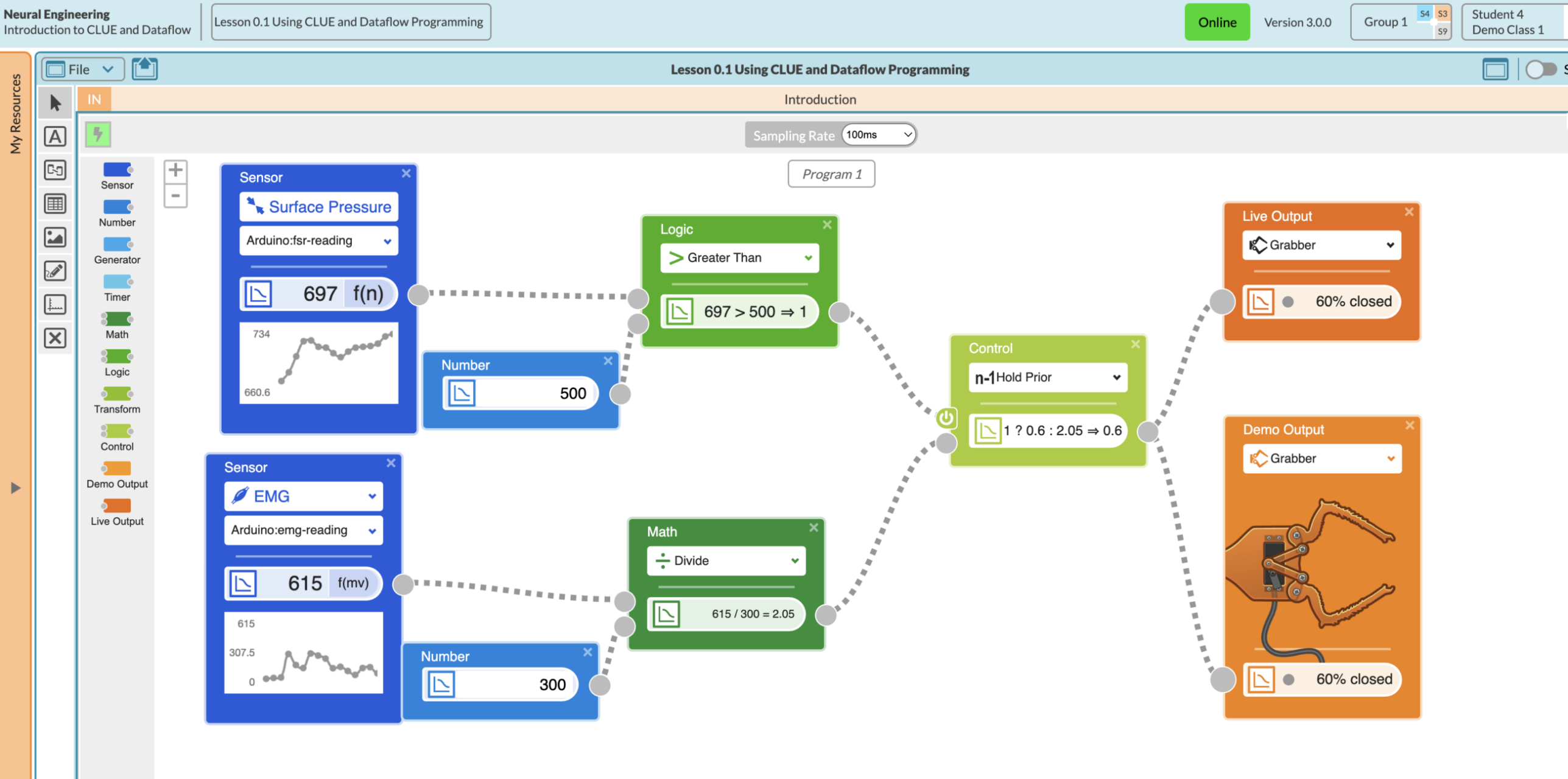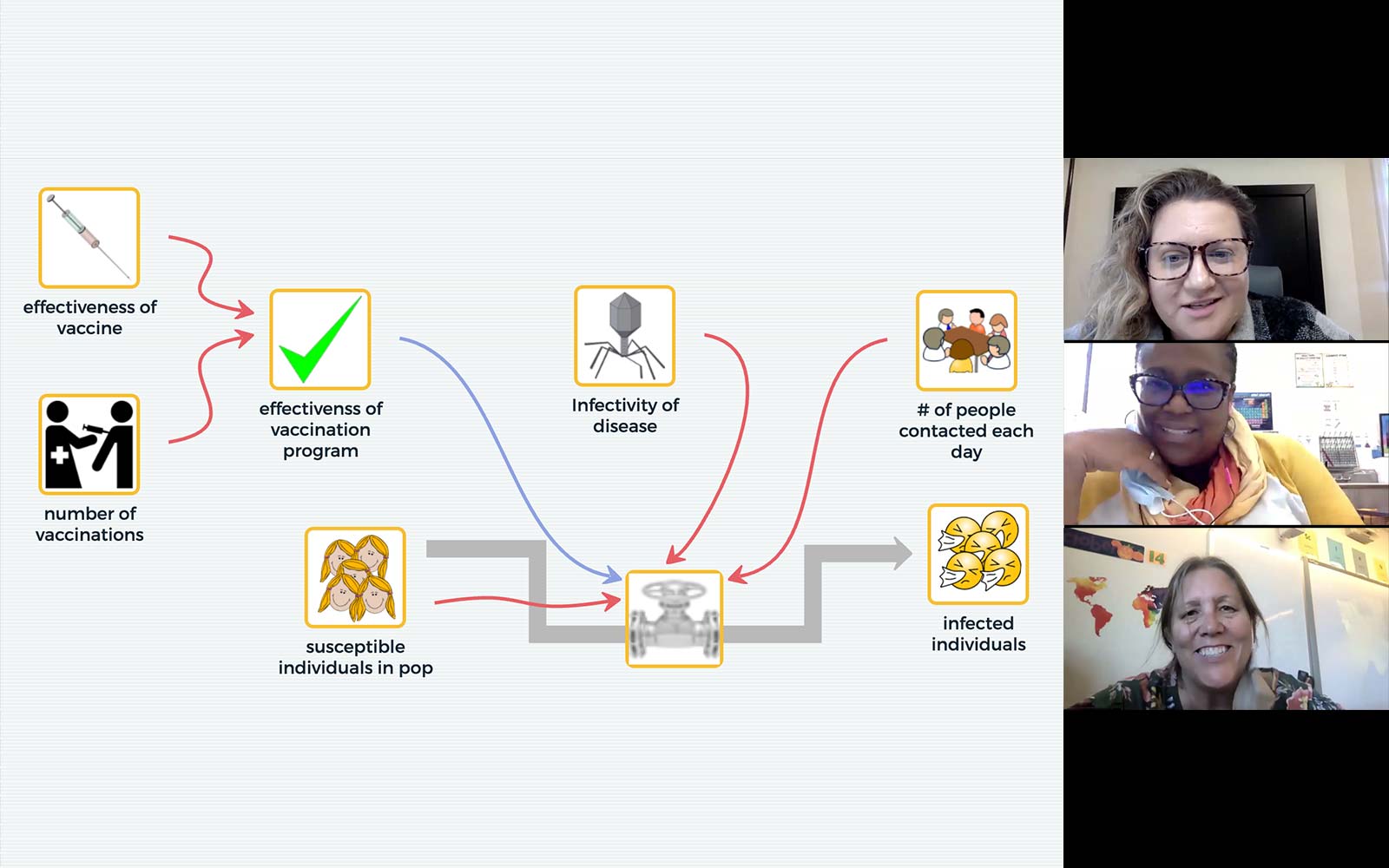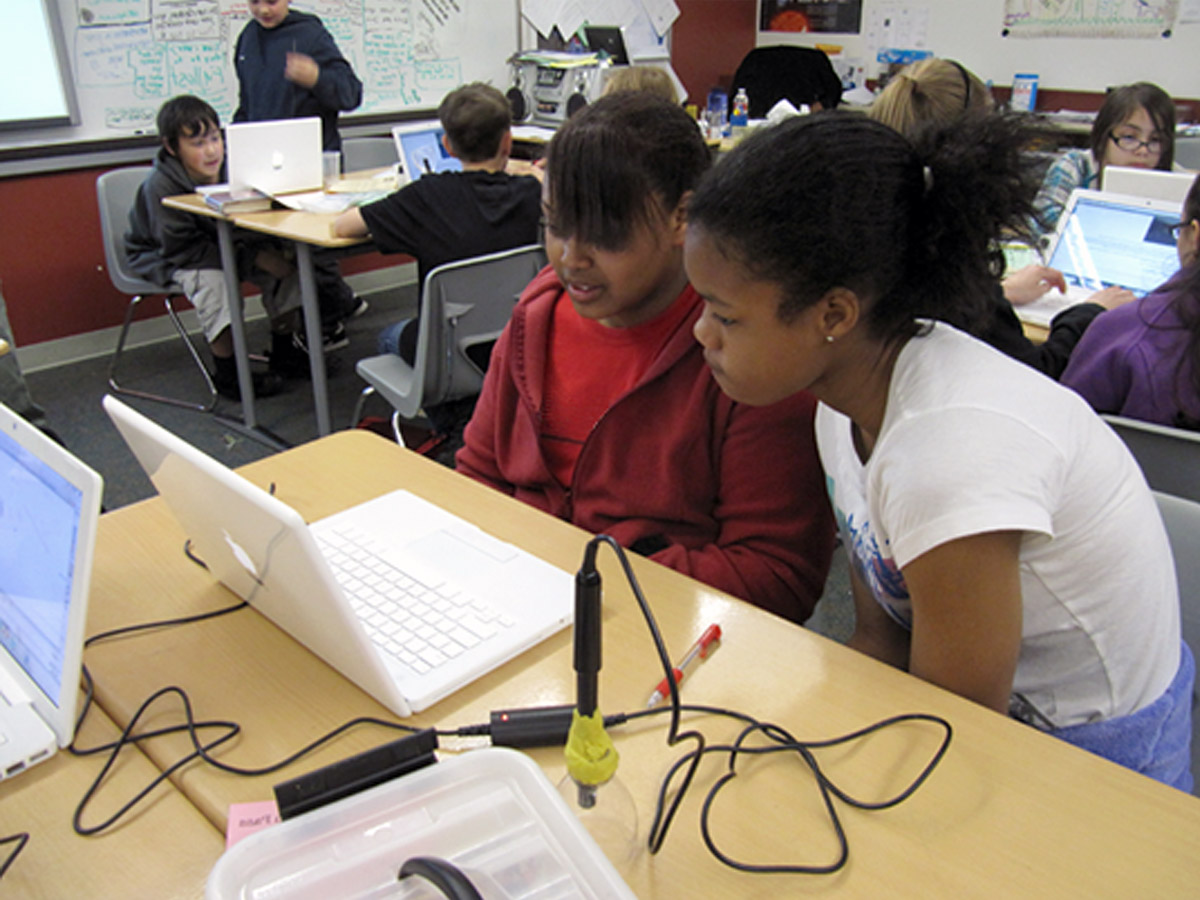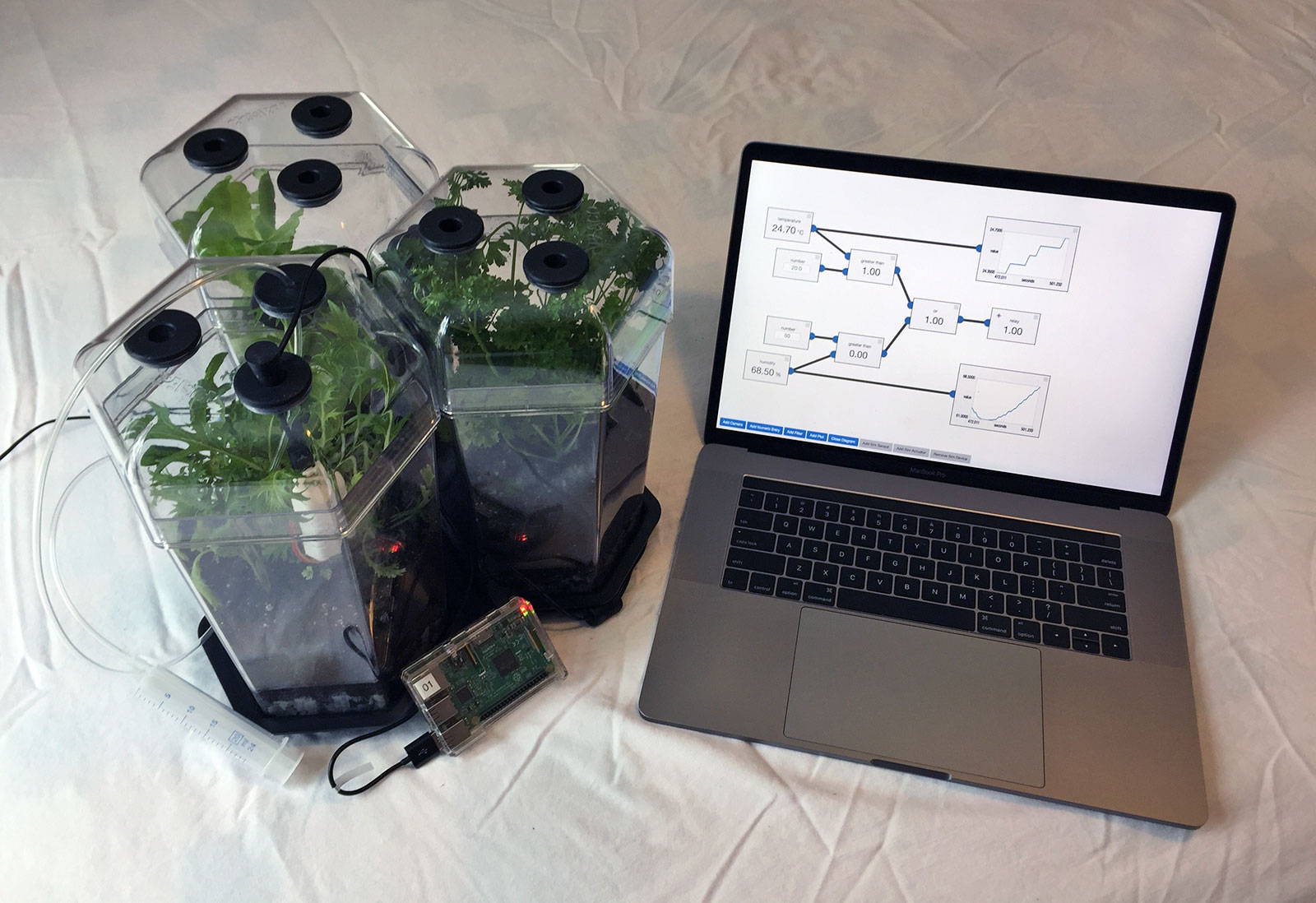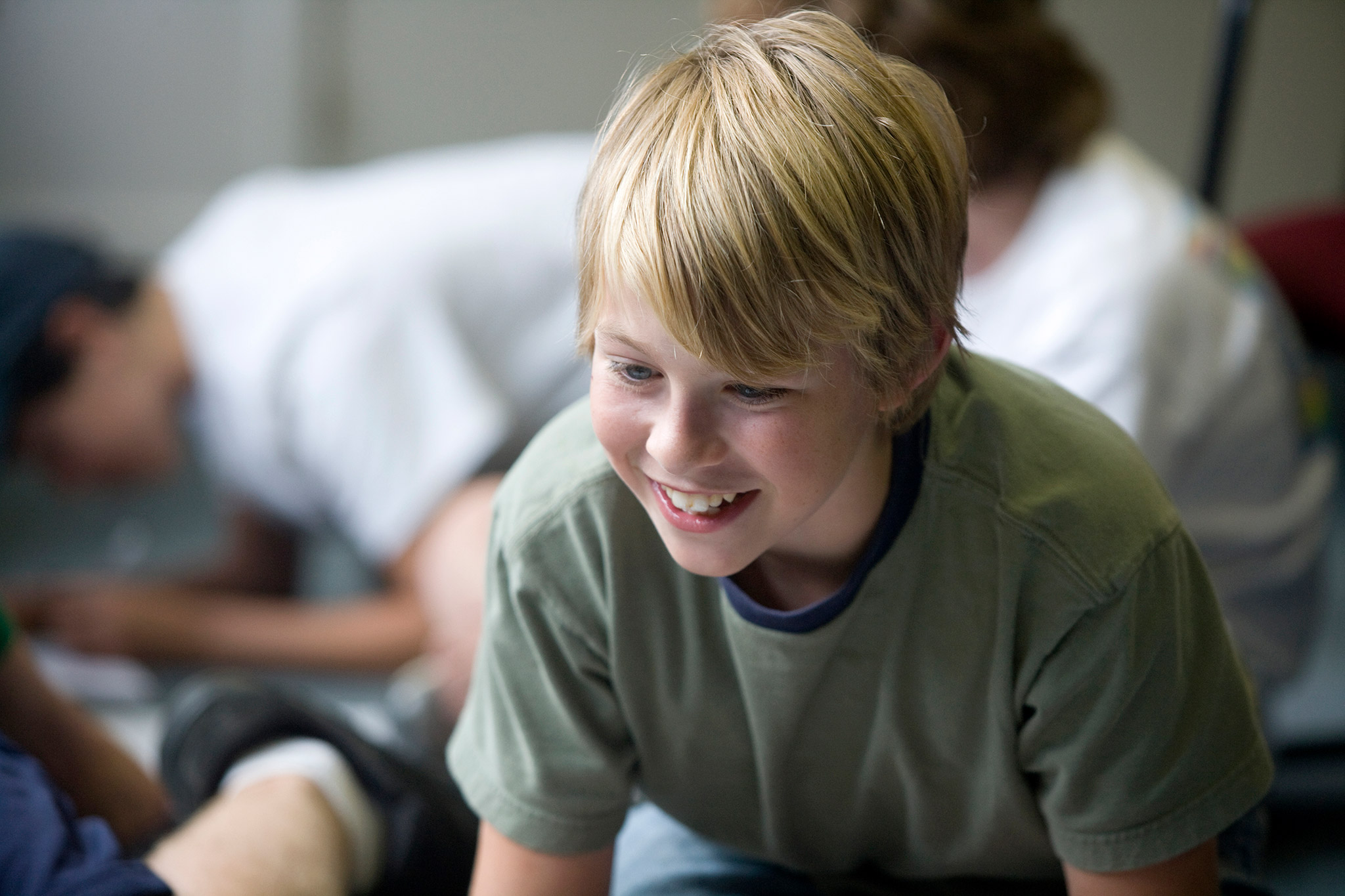Computational Thinking in High School Biology
Importance
Computational thinking is a set of processes to identify and solve problems using algorithms or steps, and can be applied not only in computer science but in other disciplines. To increase student knowledge and interest in neurobiology, engineering, accessible design and contribute to students’ long-term capacity to pursue STEM careers, this project is integrating computational thinking education into high school science biology classes.
This project is developing and studying a curriculum and app that supports computational thinking (CT) in a high school biology unit. Through a month-long neural engineering unit, students measure their own muscle and brain activity with low-cost, portable, wearable microelectronics technology. Students then design a brain-muscle-computer interface to turn neural signals into real-world output (e.g. a mechanical claw controlled by brain activity). The curriculum is supported by a web-based instructional app that guides students through the neural engineering design process, including computational elements like coding blocks, sensor and data simulation, and connecting to external devices. Neuroscience and engineering Ph.D. students and postdocs act as STEM mentors to students. Teachers and mentors are provided with professional learning opportunities.
The project engages high school biology students in rich data practices by gathering, manipulating, analyzing, simulating, and visualizing data of bioelectrical signals from neural/muscle sensors, and provides students with opportunities to apply computational thinking principles in the control of a mechanical claw that responds to pressure and temperature like the human hand would. This approach expands the accessibility and motivation of the engineering and computing experiences beyond other efforts that focus primarily on programming and computer science courses.
Research
Research is guided by the following questions.
- How does students’ computational thinking change throughout their participation in the neural engineering design process?
- What is the cross-cultural validity of two CT scales in a sample of high school students in the U.S.?
- How does the process of collecting and analyzing real-world data relate to students? experience of the engineering design process?
- How do students’ attitudes toward STEM change over the course of their participation in a neural engineering design process?
- How does teachers’ self-efficacy for fostering CT in their students via engineering design change through their participation in professional development and in implementation of the curriculum?
Publications
Bacal, J., & Fristoe, T. (2022). Under the hood: Using brain signals in a block programming environment. @Concord, 26(2), 14.
